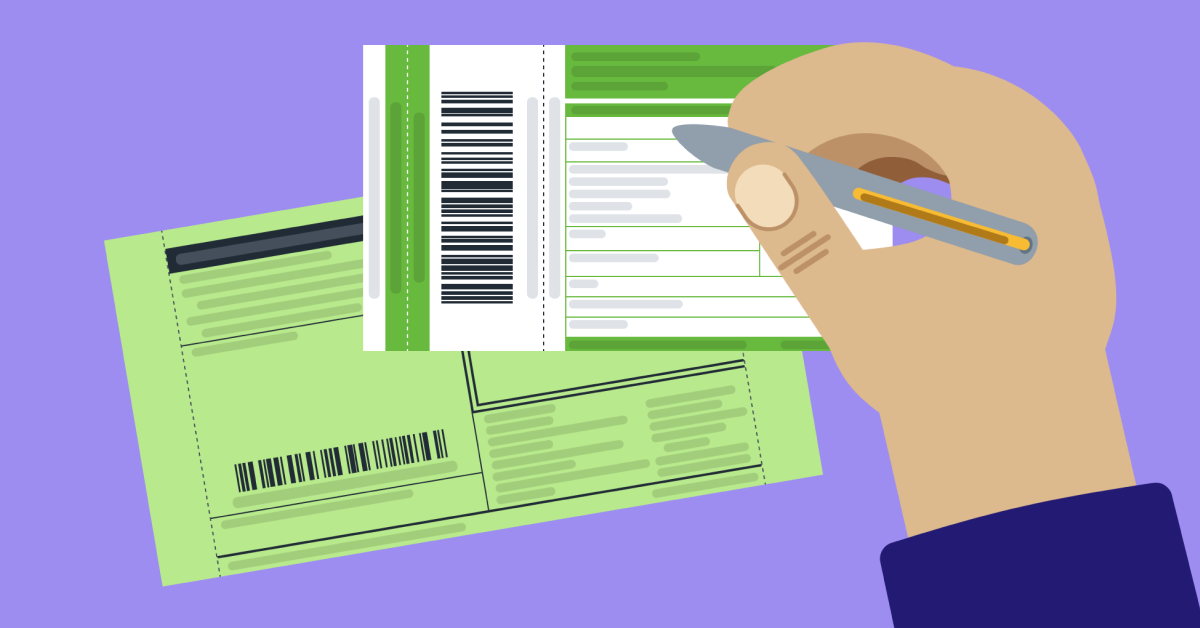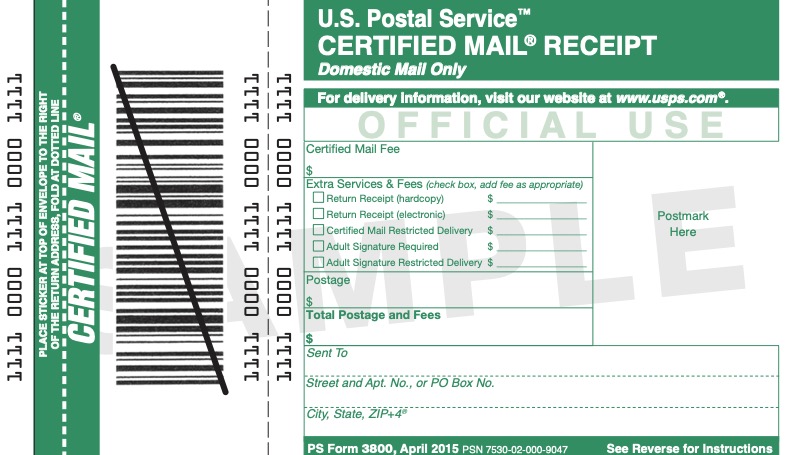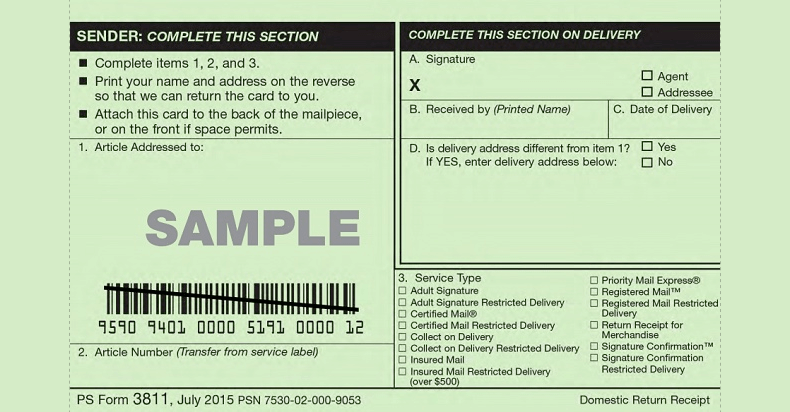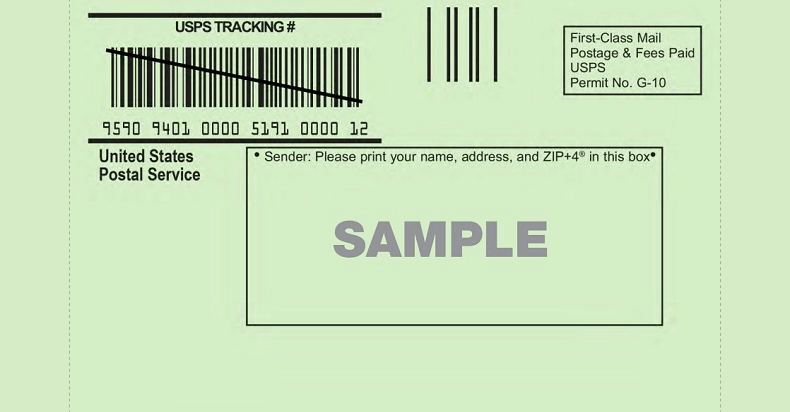Whether you have some experience with Certified Mail or you’re needing to mail a letter with this extra service for the first time, we can all agree that Certified Mail is complex. The forms, options for different mailing needs, changing prices—where do you start? This article will clear things up.
Since its inception in 1955, Certified Mail has become one of the most important and popular extra services offered by the USPS. According to USPS reports, 197 million pieces were sent with Certified Mail in 2016. Now, American citizens and business continue to leverage the Certified Mail extra service to send their most important mail due to its trustworthy and credible reputation.
What is certified mail?
Certified Mail is an extra service that provides the sender with a mailing receipt, tracking history, and, upon request, electronic verification that a mail piece was delivered or that a delivery attempt was made. Certified Mail can be used with both First-Class and Priority Mail, and items sent with this extra service are dispatched and handled in transit as ordinary mail.
When a piece is sent with Certified Mail, the USPS maintains a record of delivery (which includes the recipient’s signature). If the mailer would like a copy of the recipient’s signature, Certified Mail can be paired with the Return Receipt or Electronic Return Receipt extra service.
The hardcopy form used for sending certified mail is PS Form 3800. We’ll talk more about this form in the section on sending certified mail. Here’s what it looks like:
Types of certified mail
Depending on your exact mailing needs, Certified Mail can be paired with other extra services for more features. Here’s an overview of your options:
Certified Mail with Return Receipt
Certified Mail is commonly combined with the Return Receipt extra service, which provides the sender with evidence of delivery that includes the recipient’s signature. This comes in the form of PS Form 3811, commonly referred to as the green card. It looks like this:
Here’s how it works. The sender attaches the green card to the mail piece before it enters the mail stream. Upon delivery, the carrier has the recipient sign the card, and it is returned to the sender via First-Class Mail.
The form will include three important pieces of information for the sender: the name and signature of the person to whom the piece was delivered, the date of delivery, and information about the recipient’s actual delivery address.
Certified Mail with Electronic Return Receipt
The Electronic Return Receipt does everything the hardcopy Return Receipt does, but, as you guessed, it’s electronic. This means instead of receiving the green card back in the mail, the sender receives a proof of delivery letter (as a PDF) via email attachment by requesting it from the USPS website. The proof of delivery letter includes a digital copy of the recipient’s signature.
The USPS will keep the record for two years from the date of mailing, and after 60 days the record will take longer to retrieve.
There are a couple advantages to this option. It’s cheaper than the hardcopy return receipt, and you don’t have to worry about it potentially getting lost in the mail on its way back to you.
Certified Mail Restricted Delivery
Restricted Delivery allows the mailer to direct delivery of certified mail only to the addressee or an authorized agent. This means the article can be received by only the specified recipient or someone who has been authorized following the USPS guidelines. The Return Receipt or Electronic Return Receipt extra service can be used in conjunction with these extra services if the sender would like to receive a copy of the recipient’s signature.
Certified Mail Adult Signature Required
Adult Signature Required allows the mailer to direct delivery of certified mail only to an adult (an individual who is 21 years of age or older). The Return Receipt or Electronic Return Receipt extra service can be used in conjunction with these extra services if the sender would like to receive a copy of the recipient’s signature.
Certified Mail Adult Signature Restricted Delivery
Adult Signature Restricted Delivery allows the mailer to direct delivery of certified mail only to a specific addressee or authorized agent who is 21 years of age or older. If the specific individual is not 21 years of age or older, the mail piece will be returned to sender. The Return Receipt or Electronic Return Receipt extra service can be used in conjunction with these extra services if the sender would like to receive a copy of the recipient’s signature.
When is it used?
Anyone can send certified mail, but it plays an especially crucial role in business and legal affairs by providing evidence of acceptance and delivery that is admissible in court in the event of a legal case. These cases sometimes rise to the highest levels of the court system.
Certified Mail is commonly used for…
- Legal notices
- Government documents
- Debt collections
- Foreclosure notices
- Health care records
How much does it cost?
The Certified Mail extra service costs $4.40 per piece. This fee is in addition to the cost of postage.
For a record of delivery, the Return Receipt extra service costs $3.65 per piece. Comparatively, the Electronic Return Receipt costs only $2.32.
So, if you’re looking to send a letter under one ounce with Certified Mail and the standard hardcopy return receipt (excluding any postage discounts), it will cost $8.73.
That’s $0.68 for postage + $4.40 for the Certified Mail fee + $3.65 for the Electronic Return Receipt fee.
How do I send certified mail?
The traditional method for sending certified mail with a return receipt involves multiple hardcopy forms and is a laborious, time-consuming process compared to a streamlined, digital solution like ConnectSuite e-Certify. But, if you insist, here is a step-by-step guide for how to send certified mail with a return receipt the traditional way:
Step 1: Collect forms
Collect PS Form 3800 and PS Form 3811 (green card) from the window clerk at the post office.
Step 2: Fill out PS Form 3800
Complete PS Form 3800 by filling out all of the fields (other than the postmark area).
Step 3: Fill out PS Form 3811
Complete PS Form 3811 by writing the recipient’s address in box 1. Then, peel the tracking number label off the top of PS Form 3800 and apply it to PS Form 3811 in box 2. Then, check Certified Mail in box 3. Finally, write your own address in the Sender box on the other side.
Step 4: Attach PS Form 3800
Attach PS Form 3800 to the front of your envelope by aligning the white dashed line with the top center of your envelope. Then, fold the green strip over the top on the dashed line so there’s green on each side of the envelope.
The form must be attached in this way, as the green strip on the top of the envelope indicates to the USPS that it is a certified mail piece.
Step 5: Attach PS Form 3811
Attach PS Form 3811 to the middle of the back of your envelope.
Step 6: Pay for postage
Meter the envelope, or pay for the postage and fees at the post office. The clerk will stamp PS Form 3800 and give the bottom portion back to you as proof of acceptance. Be sure to hang on to this receipt for record-keeping.
Step 7: Track your piece
As your mail piece makes its way through the mail stream, you can track it by entering the tracking number on the USPS website.
Step 8: Receive signature
When your mail piece is delivered, PS Form 3811 is signed by someone at the recipient’s address and then returned to you via First-Class Mail. Once you receive it, be sure to hang on to it for record-keeping. This is your proof of delivery.
Sending certified mail with Easy Send Digital
Creating, tracking, and managing certified mail with Easy Send is much more simple and streamlined than the traditional method. Some of the benefits include…
- No forms to fill out manually
- Validate recipient addresses to ensure USPS compliant formatting
- Eliminate human error and save time
- Save $1.33 on each piece with the Electronic Return Receipt
- Easily search and track pieces
- Electronic return receipts securely stored in the cloud
Learn more about Easy Send here, or request a demo from our experts to see the application in action!



